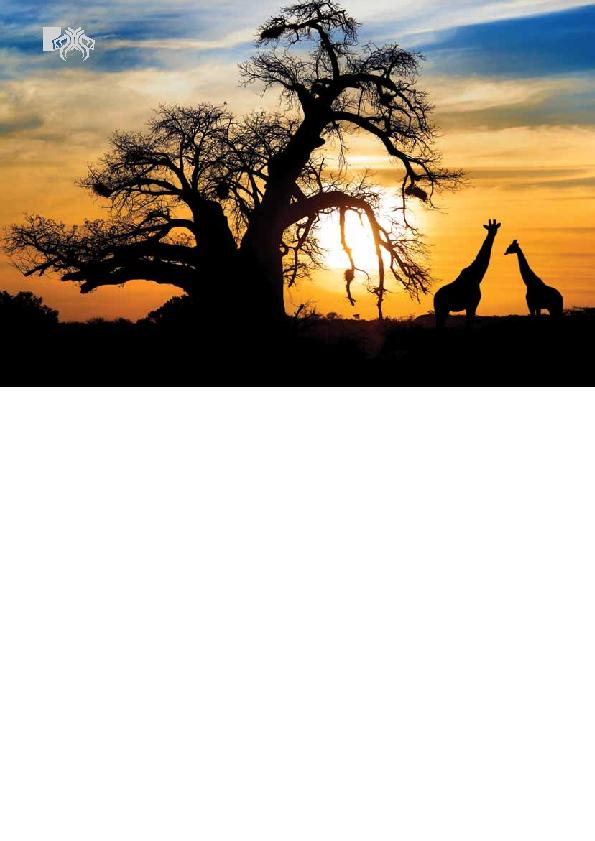
that the giraffe can constrict and close its
nostrils using its muscles. This assists in
sandstorms, as well as against insects.
tongue that one would be forgiven for
thinking was an additional limb because of
its agility. The giraffe's tongue is prehensile
and can measure up to 50cm in length, this
makes it ideal to grasp foliage and strip
branches of their leaves.
there are a number of different colour coats,
these are often associated to the region from
where the animal originates as well as the
sex of the animal. Male giraffes are known to
have darker coats than the females in their
herds. These coats are also known to get
darker as the animal ages.
serve as windows for "thermoregulation".
These areas help the animal regulate its
body temperature by acting as sites for a
complex blood vessel system as well as play
home to large sweat glands. Each giraffe's
coat is different to the next and it acts as a
sort of fingerprint for each animal.
mechanism when running helter skelter
predators. Its fur also gives off a specific
smell / odour which is considered a chemical
defence against parasites as well as a
potential sexual aftershave.
the same as the human wrist. They also
only have two gaits, walking and galloping.
It makes use of its head and neck as a sort
of rudder when in full gallop, balancing as
it moves forward. Its top speed is around
about 60 km/h and it is known to be able
to maintain relatively fast speeds for long
distances, often galloping along for several
kilometres in a bid to flee potential predators.
most vulnerable when they are sitting or
resting.
drinking. Because of its unusual structure,
drinking becomes an exercise reserved for
contortionists as it needs to spread its front
is a well known fact that unless a giraffe can
wade through water at a comfortable depth it
simply won't attempt to broach swimming as
they tend to sink and not swim.
order to spit braai a giraffe you would need
to line up 15 braais or barbeques and mount
a rotisserie on an industrial motor. One of
the reasons is because of the length of the
giraffe's neck which makes up for 2m of the
animal's actual height.
of the vertebrae occurs after birth. Their
necks give them a significant advantage
against their browsing counterparts, as the
giraffe can reach food sources that a kudu or
impala simply cannot.
necking, where to assert dominance two
males will bash their necks together to
establish dominance. The rules of necking